Best Touring Bikes in 2025 for Multi-Day Cycle Adventures
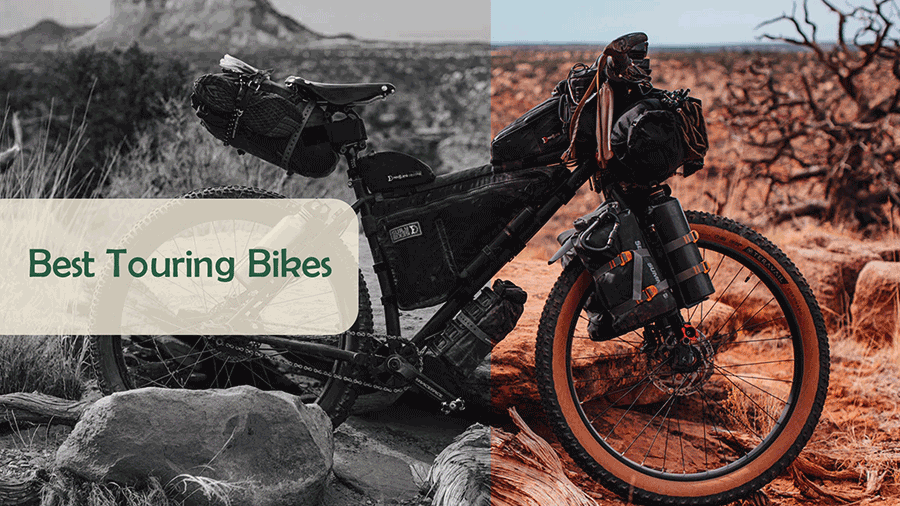
Bicycle touring is by far the best way to travel and experience the world on two wheels.
Touring bikes allows you to carry all of the necessities you need for a fulfilling life on the road.
Whether you go out of town on the weekends or looking for a comfortable bicycle for daily commutes to work – down here you’ll find a brief selection of different types of touring bikes.
- You may also like: Best Bikepacking Bikes: the 14 Models We Recommend
Best Touring Bikes of 2025
1. Yuba Mundo Lux
Versatile cargo bike
MSRP: $2,499
- 26 x 2.15″
- 3×9-speed Shimano Altus
- WTB SX-23 Rims
The steel-framed Yuba Mundo Lux is built in a cargo style that could be the perfect tourer as it is durable, comfortable, and capable of handling big loads.
The drivetrain is a 3×9 speed Shimano Altus setup with an 11-36t cassette, and a Shimano Alivio 42x32x22t crankset. The bike has hydraulic disc brakes and huge 2.15″ Schwalbe Big Ben puncture-protection tires that provide grip and durability in all conditions.
The Mundo Lux comes with an extra-long rear rack, fenders, LED lights, and a bell. Look no further when you want a bike that’s already got plenty of character for touring or everyday urban riding.
2. Surly Ghost Grappler 27

MSRP: $1,949
- Chromoly steel frame and fork
- MicroSHIFT Advent X 10-speed
- Tektro Mira MD-C400 mechanical disc brakes
- Teravail Ehline 27.5 x 2.5″
The Surly Ghost Grappler is a bicycle that could easily take you around the world (maybe even more than once) if you had the time to do it. With a touring bicycle like this, you can ride on any road and path that you come across and carve your own as well.
The Ghost Grappler gives you some incredible components for the money, so the price is well justified. You’ll get a typical gravel setup with stable geometry and a high-quality Chromoly steel frame.
You’ll be also a durable MicroSHIFT Advent X drivetrain with 10-speed gearing and Tektro mechanical disc brakes. Plenty to take on any gravel climb. In addition, you’ll have a TranzX YSP15 dropper for extra control on descents.
On downhills, control the amount of braking power you need with a set of mechanical disc brakes that stop the massive Teravail Ehline 2.5″ tires from rolling.
3. Ride1UP 700 Series
An electric touring & commuter bike
MSRP: $1,595
- Integrated rear rack
- 30-50mi range
- 750W rear hub
- 60Nm of torque
The 700-series by Ride1UP is not your typical touring bicycle as it is an e-bike. Depending on your purposed field of use, it can replace recreational cyclists’ needs to carry pannier bags comfortably and commute easily with a punch of electric assist which is available in both pedal-assist and throttle power.
Although this is not the bike to use for a trip around the world, it is definitely something to consider when it comes to shorter-distance travel. The reason why it is not as suitable for long-distance touring is the fork, which should be rigid, and a single-front chainring derailleur system.
Other than that, we’d love to see more mid-drive electric touring bikes available in the future. Sure, those bikes would cover a tight niché market, which might actually be quite unacceptable to the touring bike communities, but seeing someone cycling around the world with an e-bike would be something to look out for!
4. Tommaso Sterrata
Best value touring road bike
MSRP: $1,025
- Alloy frame & carbon fiber fork
- Shimano Claris groupset
- Avid BB5 disc brakes
- 700x40c tires
- Weight: 25.4 lb
Tommaso is a company that is well-known for its valuable budget bicycles. They mainly specialize in road bikes, but with the gravel madness at its highest, Tommaso decided to give adventure cycling a try as well.
The result is one of the most beautiful and budget-conscious touring bicycles we have. Tommaso Sterrata is an aluminum travel bicycle with a carbon fork and 40 mm tires.
Italian Design And Top-Notch Engineering. Tommaso Illimitate is one of the cheapest bicycles in this overview. Therefore, if the price is your only criterium, this is the obvious choice. However, it might be the obvious choice for some other reasons as well.
Obviously, thanks to the super-wide CST Tirent 40 mm tires, Tommaso Illimitate is capable of tackling all types of terrain. The Avid BB5 mechanical disc brakes help as well by providing lots of consistent braking power in all weather and road conditions.
The only setback is the 11-32T cassette, which might be too small if you plan to ride in very hilly areas. However, the 2x crankset provides some balance by offering you a wider gear ratio.
5. Salsa Cutthroat
Salsa knows its way around bikepacking
MSRP: $3,599
Weighing in at 24 lbs, the Cutthroat GRX is Salsa’s vision of lightweight touring bikes. Equipped with Shimano GRX RX400 hydraulic disc brakes, Teravail Sparwood 29 x 2.2″ tires, and stable gravel bike geometry – there’s not too much to add or remove from the bike. It’s ready to roam out of the box.
Salsa Cycles know their way around materials and components, hence the reason the frame and fork are made of carbon. Carbon is the premium frame material, and there are multiple mounts for racks and/or water bottles.
When carrying a bunch of extra gear along, you really need to find the right gear and cadence to keep you motivated. Therefore Salsa has chosen an 11-speed Shimano GRX 600 drivetrain.
Shimano GRX 600 is a mid-range groupset suited for off-road cycling. The longevity of this setup is provided makes it perfect for bicycle touring.
All-in-all, the Cutthroat is a great touring bike equipped with somewhat foolproof materials and components, making it a great deal to consider. These are components that you wouldn’t want to upgrade when getting a touring bike.
6. Marin – Nicasio+
Eye candy
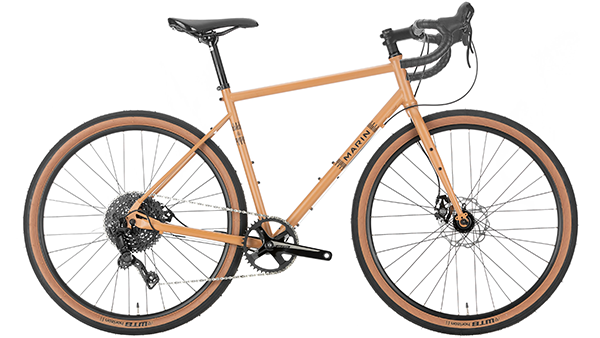
MSRP: $1,179
Marin Nicasio is a brand-new bike coming off the production line of this California-based company. It’s among the more affordable models on this list, offering fantastic value for the money. If you can afford just one bike but you want to do both on-road and off-road traveling, then this Marin model is a safe choice.
Just like the previous bikes I’ve shown you in this review, it’s built around a lightweight and bump-absorbing steel frame. More precisely, it’s the Series 1 Double-Butted CrMo steel frame.
In terms of components, Marin Lombard 1 is very similar to other adventure bikes in this price range. However, it has some crucial differences that make it even more suitable for pulling lots of weight and covering great distances daily.
For example, it’s equipped with a 1×9 speed microSHIFT drivetrain that features a subcompact 42T crankset and an 11/46T cassette.
The microSHIFT groupset is a common sight on gravel bikes that cost around $900, so there are no big surprises there. It’s a reliable shifting system that’s easy and cheap to take care of.
This Marin also comes with Tektro Road Mechanical Disc brakes and Marin’s double-wall, tubeless compatible wheels that sport 650bx47mm WTB Horizon tires. They’re ideal for gravel rides, but they’re quite fast on tarmac and asphalt as well.
7. Rondo – Ruut ST1

MSRP: $2,999
Another mid-priced adventure bike with all the classical elements to expect from a decent touring / gravel bike. The Ruut ST1 by Rondo features a steel frame and carbon fork for best bump-absorption and front-end stiffness, mounts for fenders and racks, and a drop bar. There’s also the 1×11-speed SRAM Rival 1 drivetrain which is quite a decent choice at this price range.
Besides the numerous rack & fender mounts, the bike comes with 700x40c tires and Rival hydraulic disc brakes. The frame has clearance for 650bx2.1″ tires which is excellent for a touring bike.
8. ALL-CITY – Gorilla Monsoon Apex

MSRP: $2,599
The Gorilla Monsoon is an excellent-value touring/adventure bike. With an SRAM APEX 1×11 drivetrain, 612 select steel tubing Chromoly steel frame and fork, and Tektro MD-C550 mechanical disc brakes it has it all. The bike also has unique features like a TranzX dropper post and tubeless-ready rims and tires.
The wide WTB Riddler, 27.5×2.4” tires allow you to tackle almost any terrain you want and All-City packed the frame full of mounts to make this bike perfect for bicycle touring.
9. NINER – RLT 2-Star

MSRP: $2,599
Niner RLT 9 2-Star has an aluminum frame with an RDO carbon fork. Together, they keep the weight down and provide a responsive ride, which is great if your intention is to travel long distances.
Niner RLT 9 2-Star implores you to take it on an adventure over gravel and dirt road with every component fitted on it. The loudest of them is the SRAM Apex 1 groupset. This is SRAM’s gravel-specific groupset that’s built for the roughest of terrains. It’s incredibly reliable and shifts smoothly in dirt, dust, and sand.
This RLT 9 2-Star model also has a pair of Schwalbe G-One Allround TLE 40mm tires which offer tons of traction even when the bike is fully loaded. If you find yourself racing the dark to find a place to camp, you’ll be in good hands.
The brakes are also SRAM hydraulic discs, which means that they are optimized to provide the maximum amount of power and control in loose conditions, such as gravel or mud.
We’d recommend this bike to all travelers and adventurers out there who are looking for a foolproof bike touring choice to start their across-the-world travels.
10. PRIORITY – 600
Commuter / Touring bike with carbon belt drive
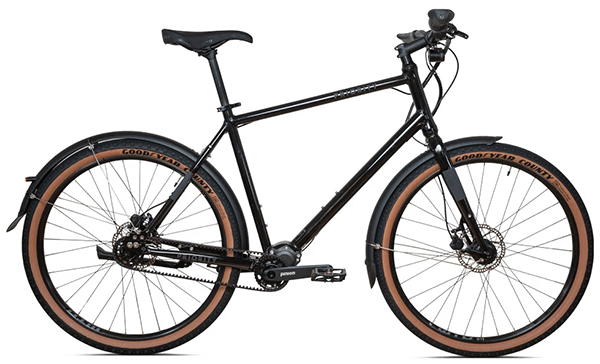
MSRP: $2,299
If you want to get a quality touring bicycle that comes with some handy accessories that you will find useful when you hit the road, you should check out Priority 600. This bike comes equipped with front and rear fenders as well as front and rear lights powered by a front dynamo hub.
Its frame and fork are made of lightweight aluminum which is the favorite material in the bicycle touring the world. It’s incredibly strong and unbelievably light. The fork is rigid and the whole bike is bejeweled with a plethora of eyelets to fit all of your accessories.
The next reason why this is a great bike touring choice is the drivetrain and the components. Namely, Priority 600 comes with a sealed Pinion gearbox and a carbon belt, which don’t require any maintenance.
Pinion simplifies shifting quite a bit. The tires are WTB Horizon 650B, tubeless-ready, so you don’t need to worry about punctures. Therefore, if you’re planning to combine both off and on-road routes on your adventure, this is a great choice.
Braking is done with Tektro hydraulic disc brakes, which are easy to adjust and maintain wherever you are. They offer excellent performance as well.
The conclusion is that you can’t go wrong with the Priority 600, no matter what kind of adventure you have in mind, as it’s a pretty much do-it-all companion.
11. SALSA – Mukluk
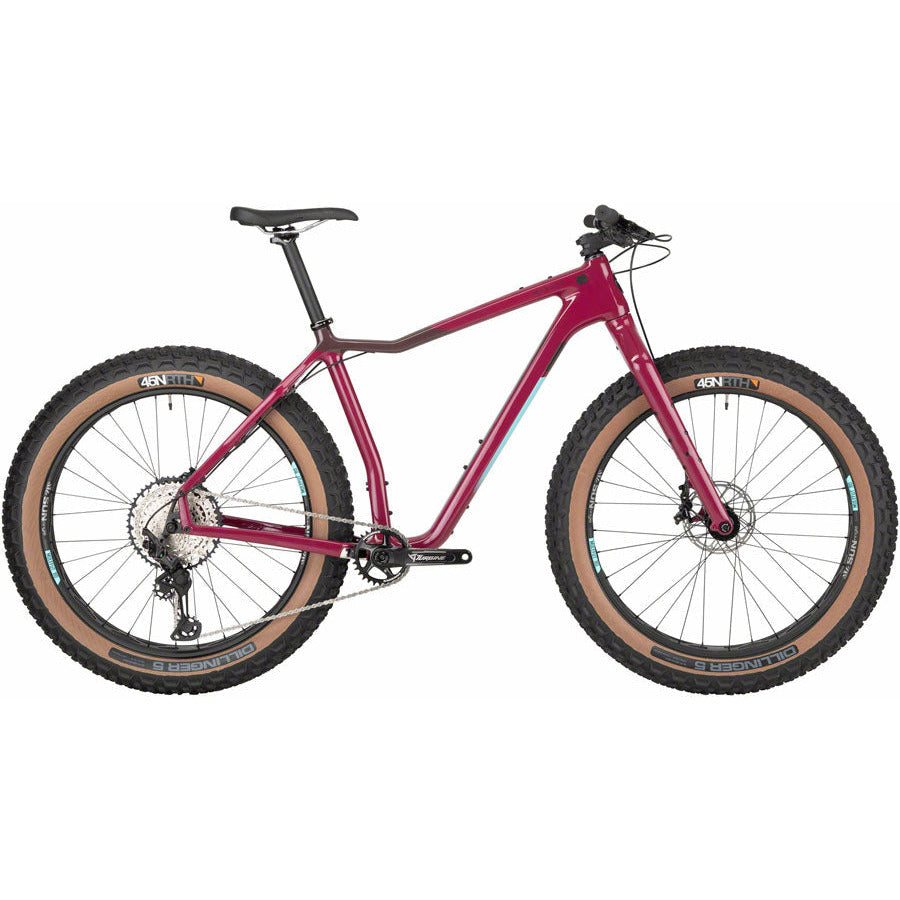
MSRP: $4,199
- Lightweight carbon frame
- 26″x4.6″ tires
- Hydraulic disc brakes
- Shimano XT/SLX 12-speed drivetrain
The Mukluk adventure bicycle is optimized for long off-road rides on gravel and dirt roads that you would choose if you wanted to see the backcountry or the bush. All of the features listed above come together in this Salsa bike to create a bicycle that can navigate gravel roads, cobstones, and even mild singletracks.
This version of Salsa Mukluk comes with a premium Shimano XT/SLX drivetrain with a 10-51t cassette. That’s a very decent range that will allow you to actually ride your bike most of the time instead of pushing it.
The tires are massive compared to other adventure bikes 4.6″ wide. Coupled with 26″ wheels, they’ll ensure comfort and grip at all times. They’re tubeless-ready as well, so you can say goodbye to punctures. Finally, this bike comes with SRAM G2 RS hydraulic disc brakes which provide swift stopping power.
12. Surly – Bridge Club

MSRP: $1,499
- Shimano Deore M5100 11-speed
- Surly Extraterrestrial 700x41mm
- Steel frame & fork
- Tektro HD-M275 hydraulic disc brakes
One of the most-coveted touring bikes online is the Surly Bridge Club. This model is obviously equipped with all the essentials for a long-distance bikepacking tour.
The quality of components is quite good for this price range so expect it to perform according to the stats. These include a Shimano Deore drivetrain, Tektro hydraulic disc brakes, Surly Extraterrestrial 41mm tires, and WTB ST i21 tubeless-ready rims.
The Chromoly steel used one this bike is extremely tough and comfortable to ride. As a bikepacking bike, the Bridge Club is loaded with mounts for racks, panniers, frame bags, or all of the above. This bike is great for recreational cyclists who want the best bang for their buck so don’t hesitate to look it up.
How to Choose a Touring Bike?
What is a touring bike?
Touring bicycle is essentially designed to accommodate multiple racks for pannier bags and water bottles. Travel longer distances, usually overnight, is a place where a touring bike thrives. They are different from bikepacking bikes in the way the gear is carried on the frame.
Must-have components
- 650b or 700c wheels
- Multiple eyelets for racks, panniers, and water bottles
- Drop-bar handlebar
- Relaxed fit
- Rigid frame
- Generally made of either aluminum or steel
- 2x or 3x front chainring for a wide variety of gears
- Mechanical disc brakes for easy maintenance on the road
With a bike that checks all of the boxes above, you can easily go on a serious cycling expedition, such as the Cairo to Cape Town cycle route, without giving it any second thoughts.
Commuter / Hybrid / Gravel – Which is best for touring?
Apparently, many cyclists confuse these three different types of bicycles because they have some things in common. Touring bikes are bicycles with a rigid fork and plenty of mounts to add the gear on, while:
The commuter bike is widely known as a bicycle that’s used for, yes you guessed it – for commuting. Other times are known as everyday around-town bikes.
Gravel vs. Cyclocross vs. Touring Bikes — Differences Explained
Hybrid bikes on the other hand are bicycles that are a mixture of two worlds – most of the time a mixture between a road and a mountain bike while they are equipped with front suspension and lack the comfort for all-day cycling trips.
Gravel bikes are often related to touring bikes due to their wide range of use, geometry, and build quality. Although a classic gravel bike features more performance-based geometry, components, and set-ups (with 1x chainring, etc)
What are the key features a touring bike should have?
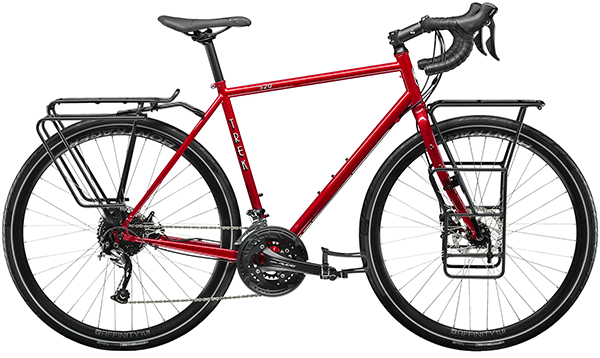
Bicycles that are used to cycle around with all share pretty much the same characteristics. Most of the time, you see those bikes use 650b wheels (27.5″), while there are the occasional 26″ wheels still around.
The frames are made of either aluminum or steel for extended durability, and as a rule of thumb with a rigid fork and a 1x front chainring means lesser maintenance while limited gearing, especially when riding around with excessive baggage.
Is a carbon fork good for touring bikes?
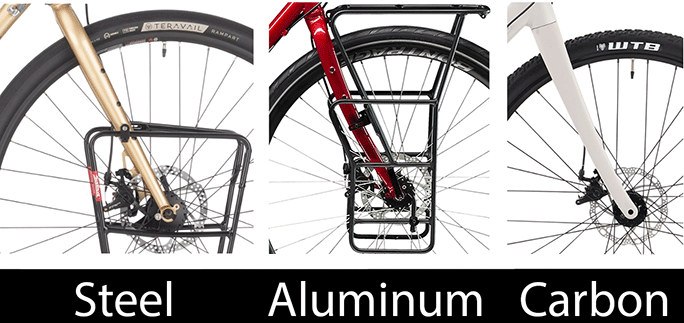
When talking about forks, which take the first beating in most cases, there are three options to choose from. Check out the pros and cons for each material:
- Steel – Cheap, durable, good vibration qualities. Very common as steel forks on touring bikes can accommodate various accessories on the bike.
Beginner Tips for Handling a Carbon Fiber Bike
- Aluminum – Affordable, durable with plenty of eyelets to add racks and water bottles on the fork.
- Carbon forks are common for most road bikes at the sub-thousand-dollar mark, and nowadays some touring/commuter bikes come equipped with carbon forks as well. The reason why most carbon forks don’t have eyelets is that any direct vibration reduces against the fork reduces.
Touring Bike Wheels And Tires
26″ x 650b vs 700c
- 26″ = Commonly used tires that are easily found all around the world.
- 650b (27.5″) Wide and sturdy, great size for gravel & touring bikes. Allows getting the pressure low for harder passes.
- 700c = Best for fast commutes on paved roads
The most popular choice of wheels for touring bicycles are 26″. The reason is that they are stable, comfortable, and easy to find even in the least developed countries in the world. On 26″ inch wheels – instead of 32 spokes, touring bike wheels usually have 36 spokes which make them sturdier.
650b wheels are better for off-roading, while 700c boasts better speed on paved roads. You can fit chunkier tires on a 650b wheel for better, while the selection for 700c is not as wide.
Chain vs belt drivetrain
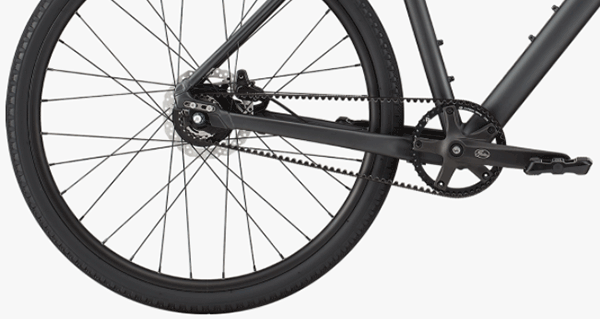
Touring means going out in the wild elements of nature for extended periods of time, so be prepared to keep the bike up to its best performance. In recent years, we’ve seen many globetrotters use a carbon belt drive instead of the classical sprocket & chain derailleur system.
A Guide to Belt Drive Bicycles – The Advantages and Disadvantages
As belt drives don’t need any lubrication and have a life expectancy of up to 19,000 miles / 30,000km, it is quite logical to think of it as a perfect alternative.
FAQ
What components should a touring bike have?
When it comes to the components on touring bicycles, less is always more. You should be looking for simplicity. The reason is that simple components are much easier to repair on the fly if something breaks down while you’re in the middle of nowhere. Still, you should be aiming for quality Shimano and SRAM parts that won’t give in that easily after thousands of miles of abuse.
What bike accessories do you need for touring?
Finally, a touring bicycle is of little use without its accessories. The indispensable ones include racks, water bottle cages, and bike bags. Some travelers also like having a dynamo which allows them to charge their batteries while riding and power bike lights.
How much do touring bikes weigh?
The weight does not play such a significant role when it comes to touring bicycles.
That’s why they are made from heavier materials such as steel and aluminum. Why spend thousands of dollars on lowering the weight of your bike by 500g when you’re going to undo that by carrying a gas canister. When you’re tugging 20-40 lbs of weight with you, a few pounds of weight up or down does not make a big difference.
What’s the difference between men’s and women’s touring bikes?
Although we haven’t listed any specific women’s touring bikes in this list, you can check out our Best Hybrid Bikes for Women to get a broader view of what to expect.
Important Factors to Consider
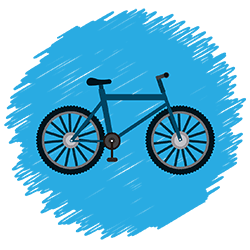 Apart from the aspects mentioned above, here are some additional points that you should consider when buying a touring bicycle. The beauty of bike touring is that there are no strict rules. You can go on a bike tour with a used $200 bicycle, or you can do it on a new $3,000 machine. It’s up to you.
Apart from the aspects mentioned above, here are some additional points that you should consider when buying a touring bicycle. The beauty of bike touring is that there are no strict rules. You can go on a bike tour with a used $200 bicycle, or you can do it on a new $3,000 machine. It’s up to you.
Touring Bike Frame
The most popular frame materials for touring bicycles are steel and aluminum. Steel is the strongest and the most comfortable material out there. Moreover, it is the easiest to repair in case of any problems. On the other hand, aluminum is not as strong and not as easy to repair, but it is significantly lighter.
Touring frames have longer chainstays and longer wheelbases. This makes them more stable and allows riders to fit them with bike bags and other accessories. They come with numerous eyelets that let you attach racks, bike bottles, and other equipment.
Gears
Even though touring bicycles look more like road bikes, they borrow gearing from mountain bikes. They often feature MTB groupsets and gear ranges which makes it easier for riders to climb steep hills under heavy loads. The most popular are 2x and 3x systems with 11-32T cassettes and higher.
Although, it’s been proved that the 1×12 gearing is among the most optimized options for longevity, price, and gearing.
However, you’ll see many belt-drive bicycles coming to the scene due to their internal gearing, and 19,000-mile belt life expectancy!



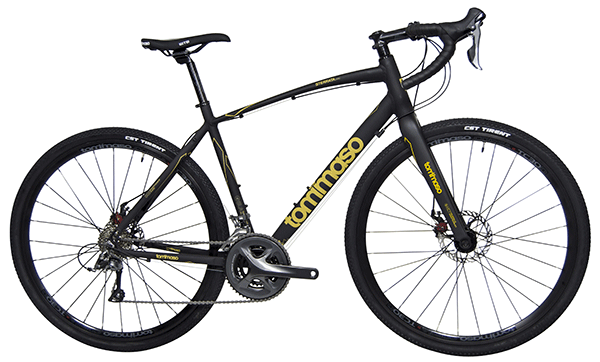


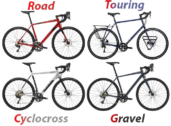

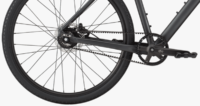


Starting my research for a bike to do several multi-hundred mile rail to trail vacations
Good luck and have fun! I think this selection is a good place to start.
I did not see one bike that looked like it could handle riggers of touring, 40soke hubs/front rack with mounts, any idiot that tours with too much weight on the front wheels are asking for trouble front rack is a great area for bag lower packs book stove and fuel handle n=bar bag passport/ money and maps and music easily detached/ backpacks clothing tent/ pad/ food for 7days ( big issue water) make sure that everything comes off easy /Been robbed a few times in three different countries/lighting and roll-up solar panel/ something that can be used while riding on the back rack / You would be amazed at what you can get by with less is always better/ cloth hanging on the bike to dry works. and that beer at night sure hits the spot. I use to live on a bike / for months at a time.
What would u recommend for extended touring then? I don’t know
Again many thanks. You have certainly given me much to consider. However, the Tektro CR720 are themselves cantilever brakes too. So I wonder why you have suggested these as a possible alternative to my present Tektro Oryx cantilever brakes on my Ridgeback? They look very similar.
I do appreciate your comments on this subject